How to make a Hydrogen Booster backfire suppressor
HO Backfire Suppressor
How to make a Hydrogen Booster backfire suppressor
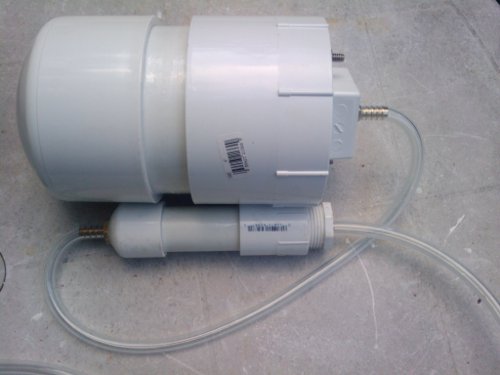
Hydrogen Gas Booster System with Backfire Suppressor
In another article we showed you how to make a Hydrogen Booster for your car. Now we cover a very important safety add-on. The Backfire Suppressor. This is a water filled chamber with hoses on the top and bottom. Hydrogen gas coming from the Hydrogen Booster enters this backflash suppressor through the bottom. The Hydrogen must bubble up through the water before exiting through the top hose and into the engine of your vehicle. In the case of a vehicle backfire, only the gas in the hose leading into the engine can ignite. The water acts as a buffer between the hydrogen in your booster tank and the car engine. This should protect your main hydrogen booster tank from exploding.
Later we will cover some more safety features that you can add to your hydrogen gas system for protection.
The Backfire Suppressor is made of 1 Inch PVC pipe from Home Depot. The end caps are chosen to fit.
Here is a list of things you will need:
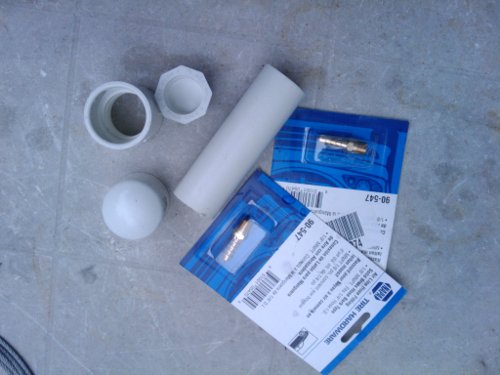
Parts to make your Hydrogen Booster Backfire Suppressor
- About a foot of 1" PVC pipe.
- 1" PVC Fitting, with inside threads
- 1" PVC End Cap, round
- 1" PVC End Cap, threaded
- 2x 1/4 inch brass hose connectors
- PVC Cement
- 2 Feet 1/4 inch Auto Vacuum Line Tubing
You will need a few tools ready for the job. A tap and die set is necessary to thread the screws and brass fitting into the threaded cap. This is very important to make an air tight seal in the chamber. A drill press is handy, but not required, to make straight holes in your work. Also a few drill bits and some wrenches. And, last, a hacksaw to cut the PVC pipe.
Please carefully follow the instructions below.
Get a ruler or straight edge and mark the dead center of both end caps of the hydrogen backfire suppressor to prepare them for drilling. (See photos below).
It is better to use a drill press to drill the holes precisely and perfectly straight. If you have a hand drill and a steady hand, feel free to do it freehand. Be careful to hold the parts down securely to make sure they stay still while drilling. This plastic is a bit soft to work with and a little slip can mushroom out your hole. Use a 23/64 inch drill bit, same as in the previous page. The last picture shows the two end caps drilled, sitting on the drill press table.
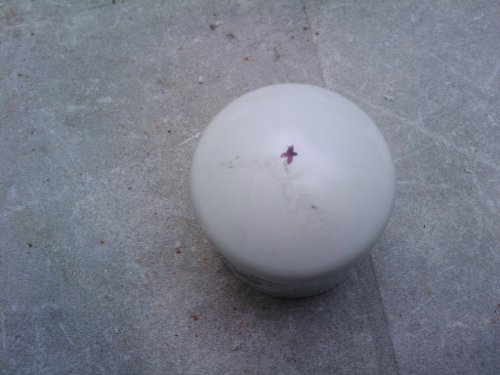
Mark the center of the round end cap for drilling
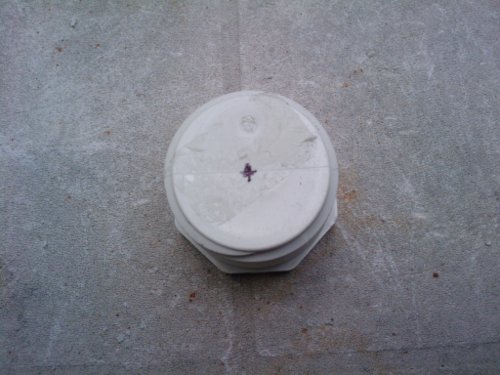
Mark the center of the threaded cap for drilling
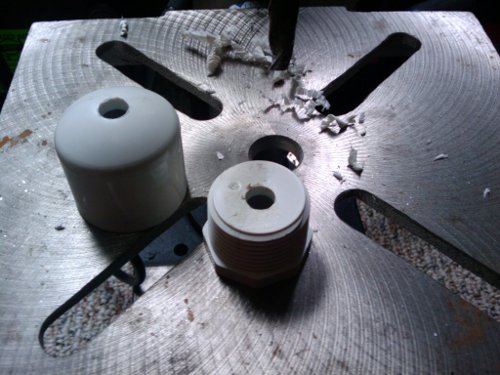
Holes are all drilled, ready to tap
Now, take your tap and die set, with the 18 inch MNPT pipe tap and thread the two end caps to accept the brass pipe fitting. Wash all of your parts and dry them for the next step.
Coat the threads of one of your brass fittings with PVC cement and screw it into the bottom, rounded cap of your backfire suppressor. After getting it hand tightened, use a wrench to bring it flush with the bottom of the cap. Now, coat both top and bottom of the brass fitting (inside and outside) with more cement. Wait a few seconds and then tighten the fitting down a little bit more. This bites it into the plastic a bit, making an air tight seal.
If you look at the blow up view of the third photo below, you will see the plastic bulges up a little around the brass fitting. This is what you want.
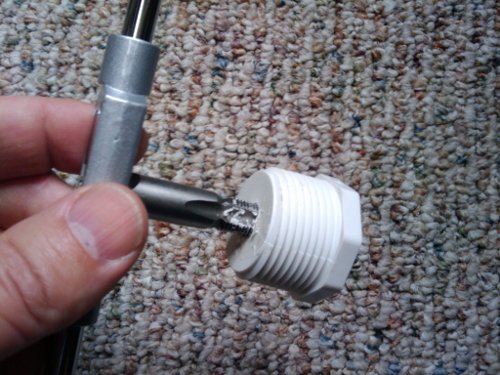
Thread the backfire suppressor end cap
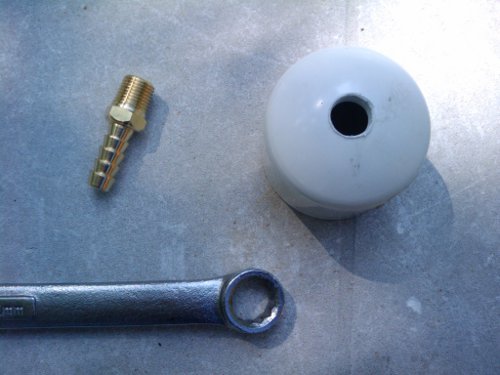
Coat brass fitting with PVC cement
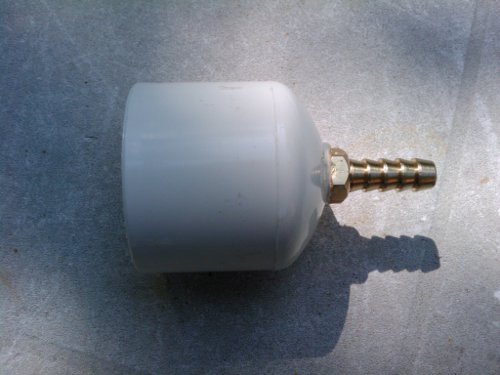
Tighten the brass fitting into the end cap
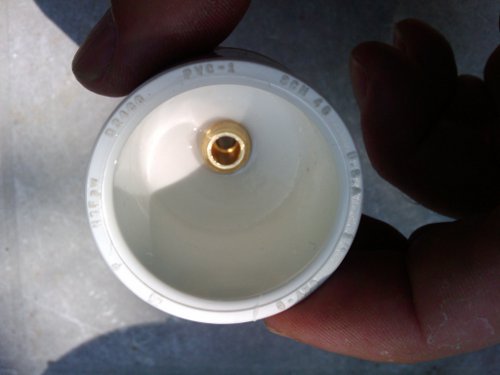
Put PVC cement on inside of threads
Take your one inch pvc pipe and cut off about 4-5 inches of it with a hack saw. Debur the edges and wash all of your parts with soap and water. When dry, you can glue them together according to the directions on the PVC cement label. Coat the inside edge of the threaded adapter and the outside of one end of your pipe. Press the tightly together and hold for at least 30 seconds. (See second photo). Now, do the same with your rounded end cap on the other end of the pipe. You should have something that looks like the third picture below. You can screw the threaded cap into the open end and set it aside.
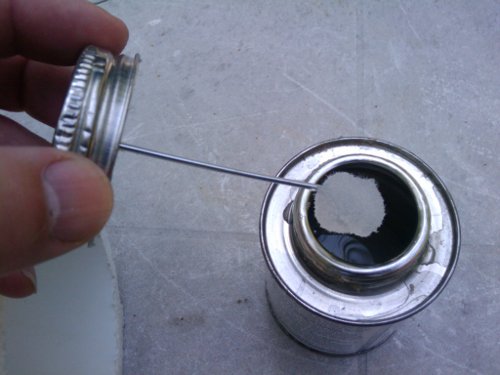
Start to coat parts with PVC cement
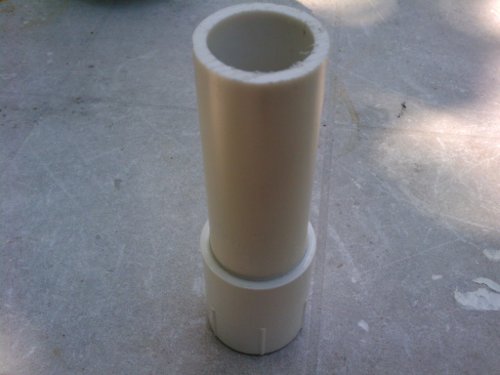
The Hydrogen Booster Backfire Suppressor tank is cemented together
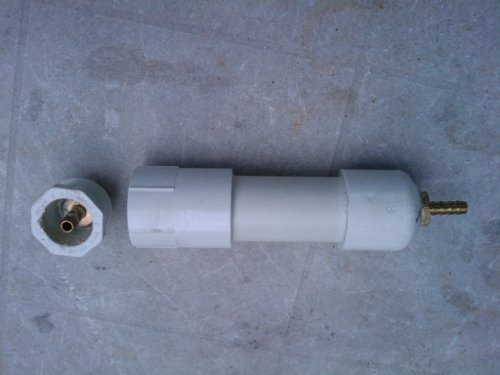
Here is the complete backfire suppressor
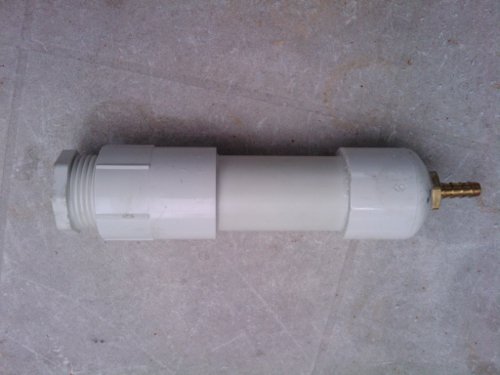
Backfire Suppressor for the Hydrogen Booster system
You have finished the Hydrogen Gas backfire suppressor.
Feel free to ask any questions or get help with your project on our
Final Notes:
Hydrogen gas is highly explosive. Use extreme caution working with this system and wear eye and ear protection any time you work near one. Also use caution working with electricity. The hydrogen gas boosters use between ten and thirty amps of power. This is enough to quickly kill a person.
Disclaimer: The ideas presented here are for informational purposes only. Experiment at your own risk. We assume no responsibility whatsoever.
About the Author
| Troy Reid |




